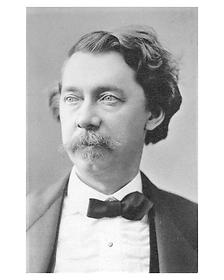Cases
Making Toxicology Visible: the Vosburgh poisoning case
In May of 1878, Reverend George Vosburgh, the charismatic young pastor of Jersey City's Madison Avenue Baptist Church, was indicted on charges of attempting to poison his wife Harriet. It was alleged that he repeatedly administered overdoses of tartar emetic (a commonly prescribed medicine whose active ingredient was the toxic metal antimony).
Throughout the winter of 1877–78, the Vosburghs' marriage had been failing. The Reverend was angry that his wife had not given him any children, had undergone two abortions without his approval, and had accepted a ring from a "barman." In the midst of the quarrels between the Reverend and his wife, Mrs. Vosburgh fell gravely ill. James Sickles, her brother, suspected that the Reverend, while attending his wife at her sickbed, was slowly poisoning her. Sickles collected samples from drinks that the Reverend had served his wife, and also a sample of her urine, and brought them to the laboratory of Dr. R. Ogden Doremus, professor of chemistry at Bellevue Medical College. Doremus found evidence of antimony in every sample.
During the trial, the professor brought his apparatus into the courtroom and performed three toxicological tests before the jury. Doremus's demonstration on the witness stand was novel and impressive. It was featured in reports in daily and weekly newspapers, and several illustrated newspapers. For a time, it seemed to sway the jury and the public.
But the Reverend's politically-connected defense team cast doubt on the prosecution's case by calling disputing experts, attacking the chain of custody (Sickles couldn't prove where his samples came from), and by constructing alternative (albeit contradictory) explanations for what had occurred. At the same time, a visibly recovered and fashionably-dressed Mrs. Vosburgh sat by her husband during the trial and refused to testify.
The jury found Vosburgh not guilty, despite the courtroom chemical analysis. After his acquittal, Vosburgh resumed his ministry, but he and his wife separated. A few months later, additional evidence was brought forth in the press, indicating that Vosburgh had treated his wife badly and had in fact attempted to poison her. Public support for him faded and he was forced to resign his ministry.
